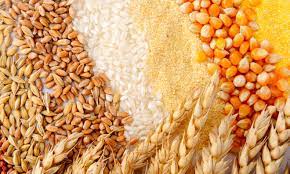What type of food is cereal?
A cereal is any grass cultivated for the edible components of its grain (botanically, a type of fruit called a caryopsis), composed of the endosperm, germ, and bran. Cereal grain crops are grown in greater quantities and provide more food energy worldwide than any other type of crop[1] and are therefore staple crops. Edible grains from other plant families, such as buckwheat, quinoa and chia, are referred to as pseudocereals.
In their unprocessed whole grain form, cereals are a rich source of vitamins, minerals, carbohydrates, fats, oils, and protein. When processed by the removal of the bran and germ the remaining endosperm is mostly carbohydrate. In some developing countries, grain in the form of rice, wheat, millet, or maize constitutes a majority of daily sustenance. In developed countries, cereal consumption is moderate and varied but still substantial, primarily in the form of refined and processed grains.[2] Because of this dietary importance, the cereal trade is often at the heart of food trade — with many cereals sold as commodities.
Cereals, or grains, are members of the grass family (Poaceae) cultivated primarily for their starchy dry fruits. Wheat, rice, corn (maize), rye, oats, barley, sorghum, and some of the millets are common cereals.There are six true cereals in the world today, which are Wheat, Rye, Rice, Oats and maize. Of these wheat, maize and rice are the most important, and each has played roles in the development of civilizations.





